
The Arsenal of Venice or the Venetian Arsenal (Arsenale di Venezia) is a historical complex of shipyards and workshops, thanks to which the Republic of Venice could fight the Ottomans in the Aegean Sea, and conquer the routes of Europe.
Today, part of the arsenal can be visited. Exhibitions and various events are also held here. The Museum of Naval History of Venice (museo Storico Navale di Venezia) is located in historical buildings near the arsenal.
The Arsenal of Venice is a complex object with an area of 48 hectares, located on the northeastern outskirts of the Ancient City (the historical island part of Venice), in the heart of the lagoon system, including islands and the coast.

The history of the state shipyard dates back to the 12th century (1104). In 1220, the first document was issued attesting to the existence of the Old Arsenal, consisting of two rows of covered courtyards aligned around the dock, communicating with the San Marco basin through the Arsenal Canal and surrounded by battlements.
The Arsenal was responsible for most of the naval power of the Republic of Venice from the late Middle Ages to the early Modern period.
During its history, the Arsenal has expanded several times and, due to the development of shipbuilding technologies, has been subjected to constant physical and functional adaptation. Thus, the Arsenal included a complex of shipyards, arsenals, various workshops, workshops and sites for the construction and equipping of warships of the Republic of Venice, required for the crusades in which the republic participated.
Having reached the apogee of territorial development during the First World War, during the twentieth century the Arsenal experienced a gradual abandonment of production activities and a strong reduction in occupied areas by the Navy.
Today, the Venetian Arsenal is undoubtedly one of the most interesting places in Venice, and also has historical and monumental value.
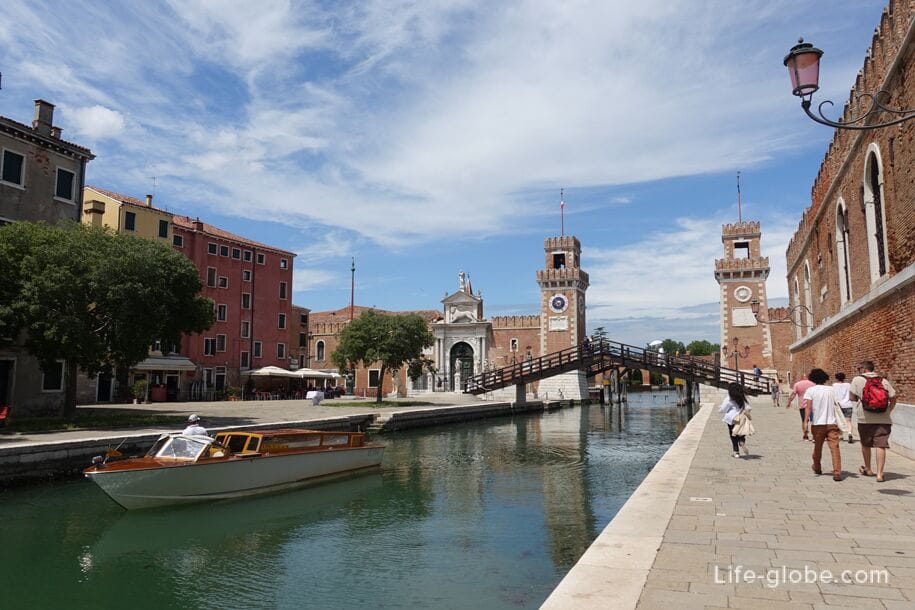
One of the most attractive parts of the Arsenal of Venice is the one that overlooks the Arsenal Canal of the same name, along which stretches a monumental battlemented wall that leads to the main gate of the Venetian Arsenal.
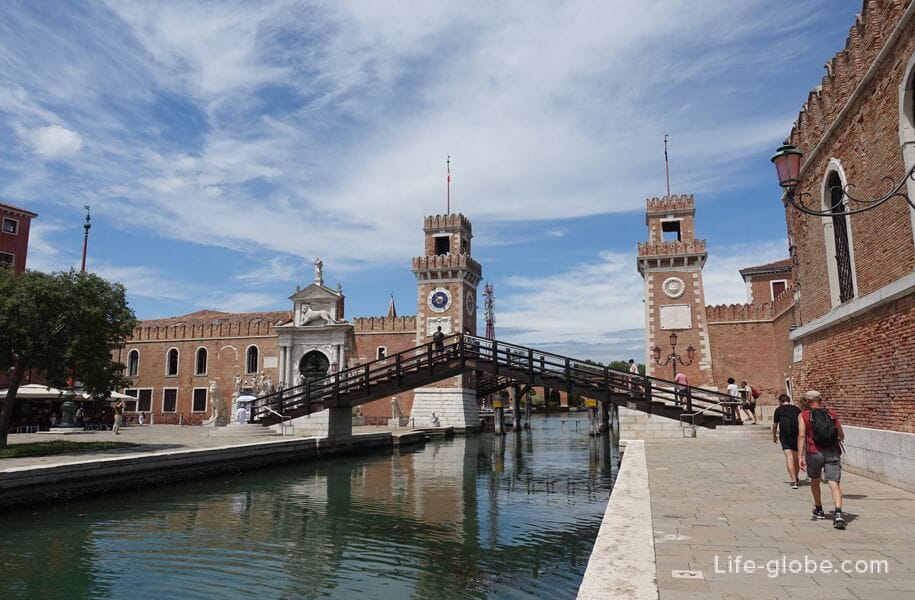
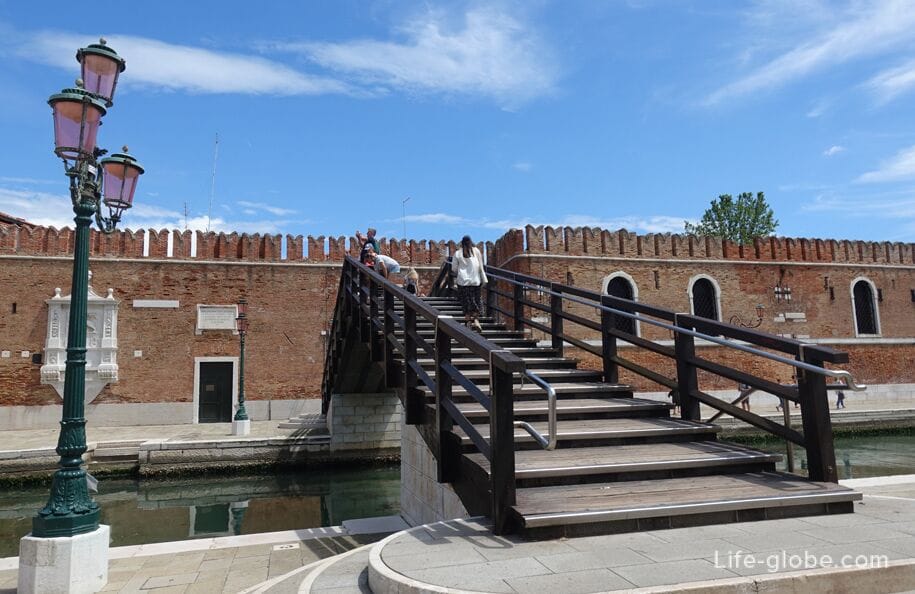
Here are the Arsenal Towers. At the base of the left tower (the one with the clock) there is a sculpture "Archaic lion" from Delos with an inappropriate head - this is the spoils of war by Francesco Morosini.
In general, four statues of lions are displayed at the gates of the Arsenal, as a symbol of the patron saint of Venice, St. Mark.
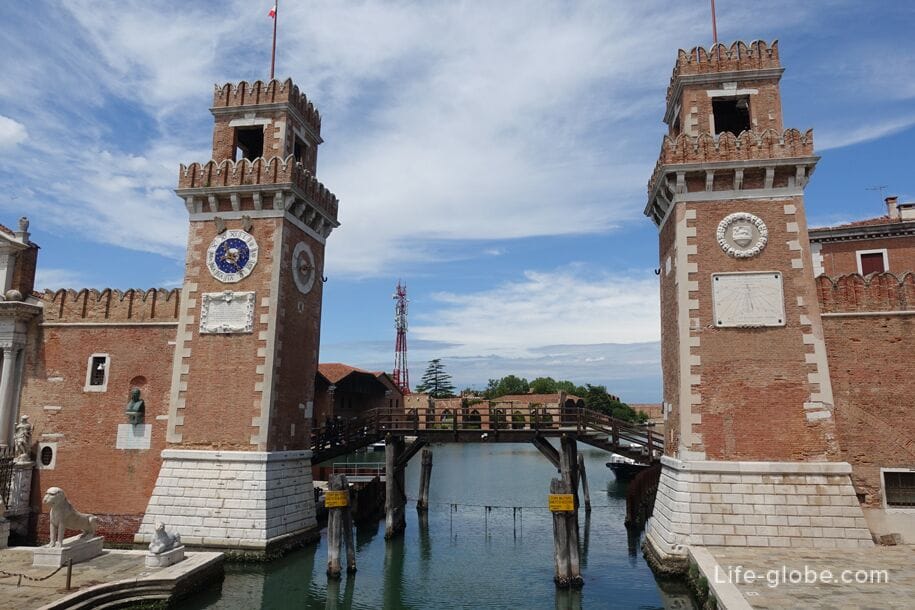

To the left of the towers, the Land Gate (Porta di Terra) is notable, made in the form of a monumental arch with columns and the image of the winged lion of St. Mark in the upper part. Sculptures are also placed around the gate, on the fence; and the entrance itself is guarded by statues of lions made of white marble.
One of the guard lions (left) is referred to as the "Lion of Piraeus" (Leone del Pireo) and is the prey of the Venetian naval commander Francesco Morosini, brought from Piraeus (the harbor of Athens) in 1687.
The lion was originally sculpted around 360 BC and became a famous landmark in Piraeus, where it has stood since the 1st or 2nd century AD. His fame was such that the port eventually became known in Italian as Porto Leone ("Lion Port").
The lion is depicted in a sitting position, with a hollow throat and a trace of a pipe (now lost) running down its back; this suggests that it was once used as a fountain.
The statue, made of white marble and having a height of about 3 meters (9 feet), is particularly noteworthy because in the second half of the 11th century it was inscribed by the Scandinavians, who carved two long runic inscriptions on the shoulders and sides of the lion. The Vikings who carved the runes on the lion could have been Varangians hired in the service of the Byzantine (East Roman) emperor or those Vikings who traveled from Scandinavia along the Atlantic coast of Europe.
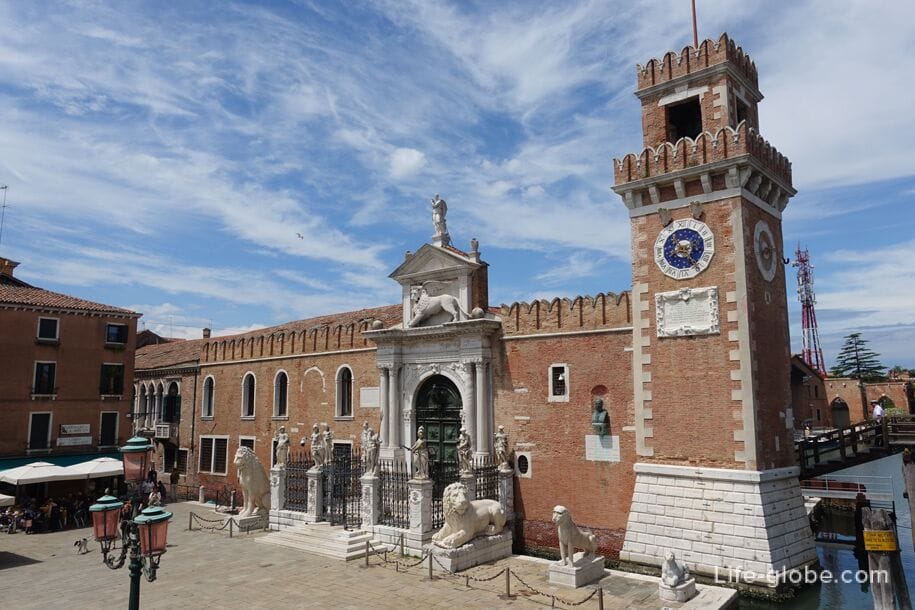
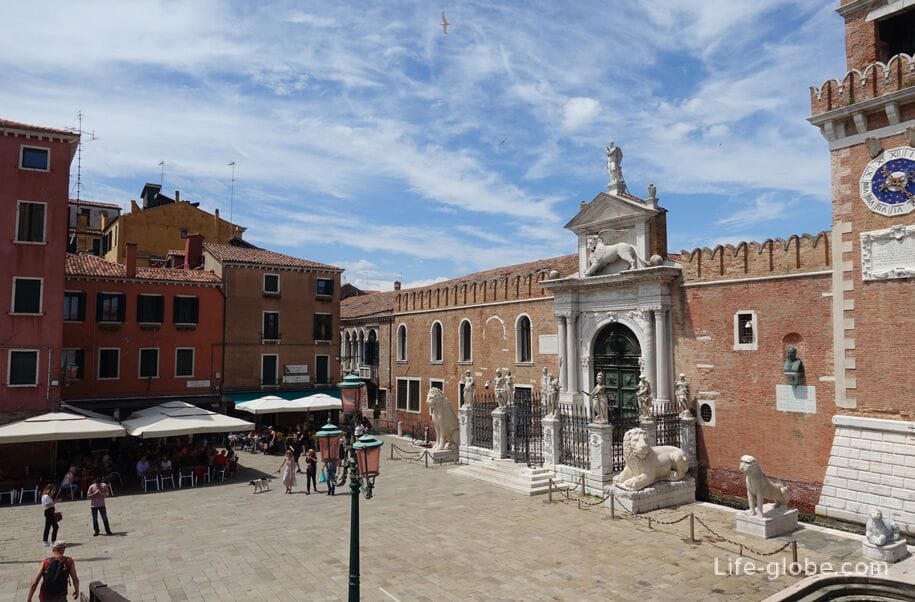
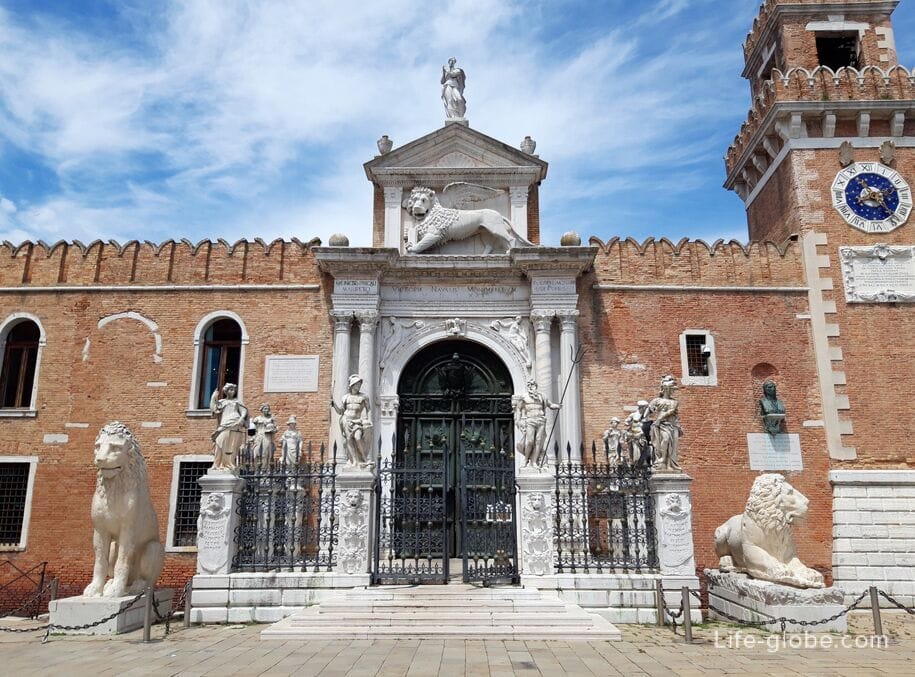
The Arsenal complex can be divided into the Southern Arsenal, the Northern Arsenal and the areas belonging to the Navy.
The Northern Arsenal (ARSENALE NORD), which can be reached by ferry routes 4.1, 4.2, 5.1 and 5.2 (ACTV stop "Bacini - Arsenale nord") or on foot from the Campo de la Celestia along the path along the northern border of the Arsenal, is often open to the public. Some rooms of the arsenal are open only on the days of certain events.
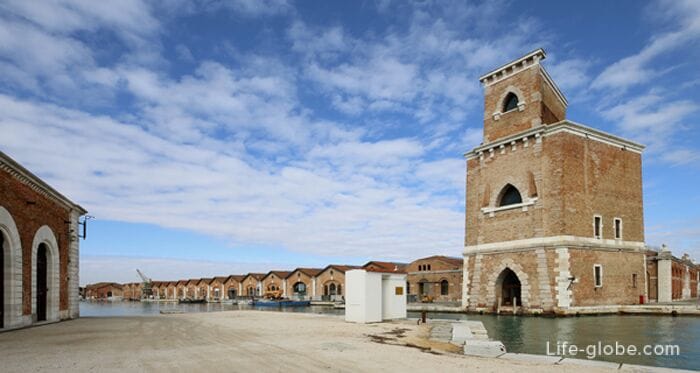
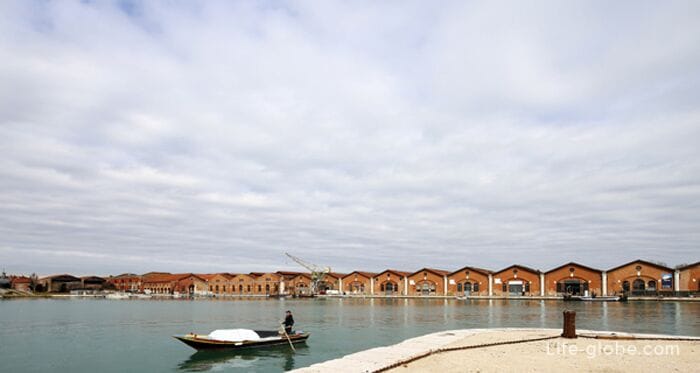
The Southern Arsenal (ARSENALE SUD), which can be reached by lines 1, 4.1 and 4.2 (ACTV stop "Arsenale") or on foot from the Slavyanskaya Embankment (Riva degli Schiavoni), used by the La Biennale di Venezia Foundation and is available during the opening of exhibitions; and in other periods - in accordance with the visits organized by the Foundation itself. Also during the opening of exhibitions, Giardino delle Vergini is open during the day - a large green area surrounded by the walls of the Arsenal, which extends over the territory of the former monastery of Santa Maria Vergine, demolished at the end of the 19th century.
Areas of the Arsenal belonging to the Navy are usually closed to the public, but they can be visited on some special occasions.
Attention! Since the events held on the territory of the Arsenal of Venice are constantly changing, the hours of visits to the Arsenal and the cost of entrance tickets (if any) may also change, we recommend checking all information about visiting the Venetian Arsenal on the official website: arsenaledivenezia.
The former buildings of the 15th-century granary and the old rowing workshop of the 16th-century Arsenal now house the Naval Historical Museum of Venice (Museo Storico Navale di Venezia).
The museum houses a tombstone monument to Angelo Emo, the last captain of the Venetian fleet, who was not only a commander, but also the inventor of combat devices (his floating battery is still famous, the model of which is on display).
The first floor of the museum is almost entirely dedicated to the golden maritime history of the Most Serene Republic. Some models of great historical value are on display here: an impressive reconstruction of a military galley used until the middle of the sixteenth century; "galeazza", a large galley of a new concept, which was the main hero of the victory over the Turks at Lepanto (1571); a model of the queen of all representative boats, "Bucintoro", a ceremonial ship used by the Doge in Ascension Day for the "wedding at sea": "We are marrying you," said the doge in Latin, throwing the ring into the water."
Also of interest is the Padiglione delle Navi, where some samples (real, not models) of typical Venetian boats, ancient ceremonial gondolas, lagoon working boats are exhibited; combat boats, primarily the glorious torpedo boat that remained in the fleet after the exploits of the Second World War; racing boats, such as the famous racing ship of the 1930s years of "Asso".
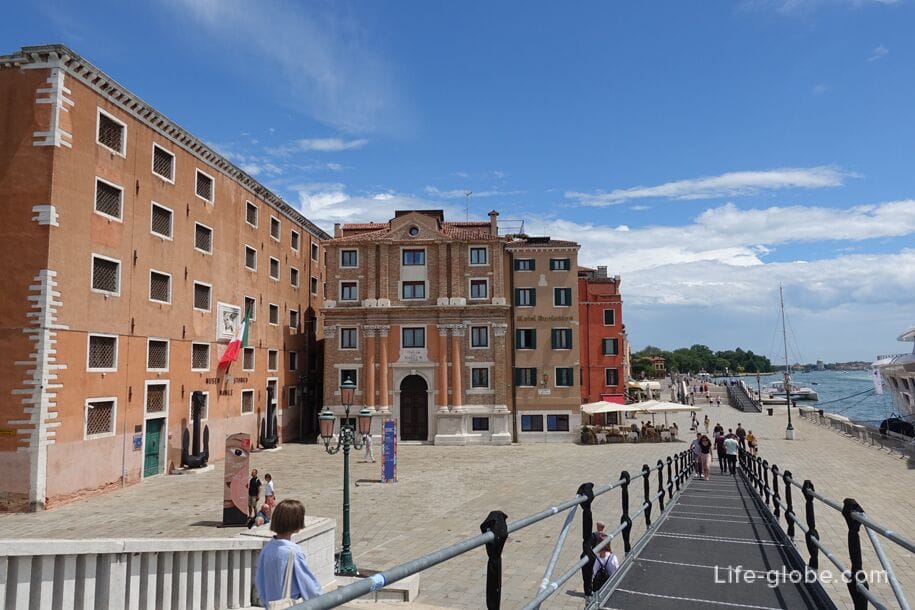
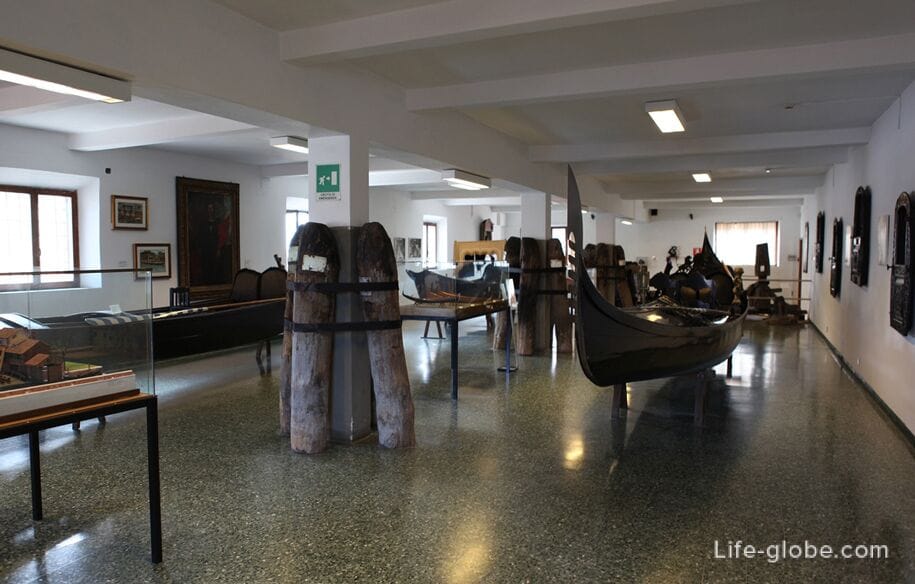

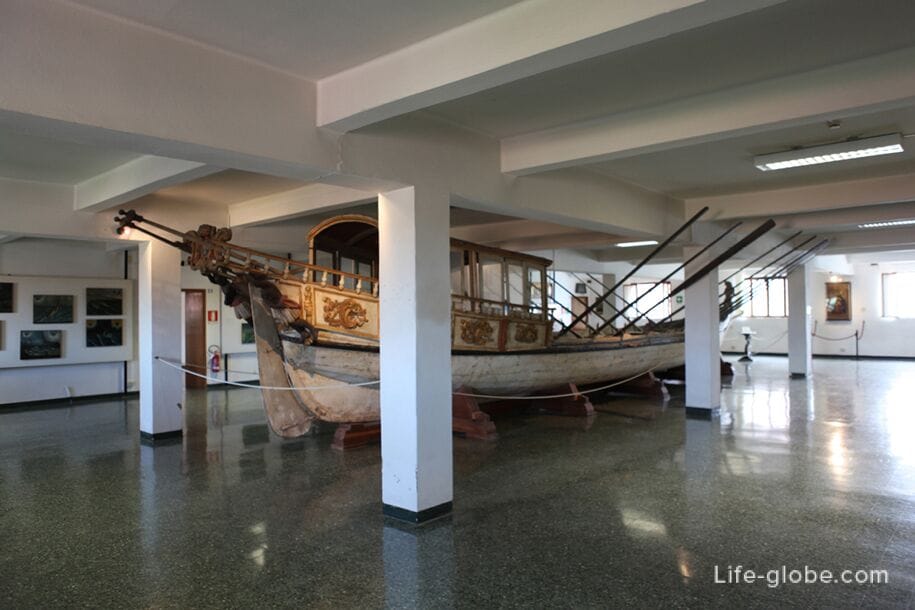
The "Pavilion of Ships", which is a continuation of the museum, is located in the old "workshop of oars" of the Arsenal.
Here is part of the collection of boats of the Museum of Naval History of Venice.
The building was built in the middle of the sixteenth century for use as a workshop and storage of oars. Shortly after its construction, in 1577, it was temporarily adapted as the residence of the Maggior Consiglio, the main governing body of the city, after a catastrophic fire that made the Doge's palace uninhabitable for a long time.
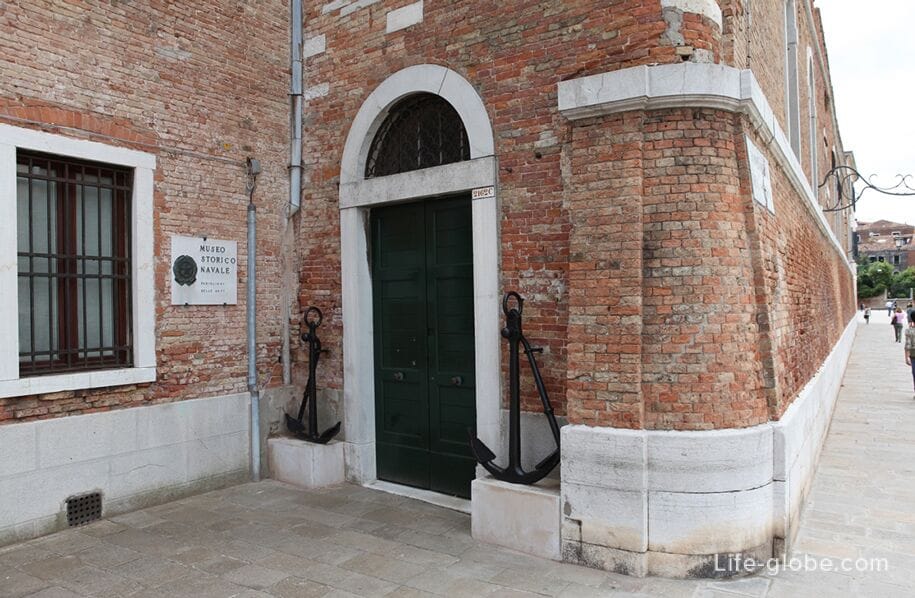
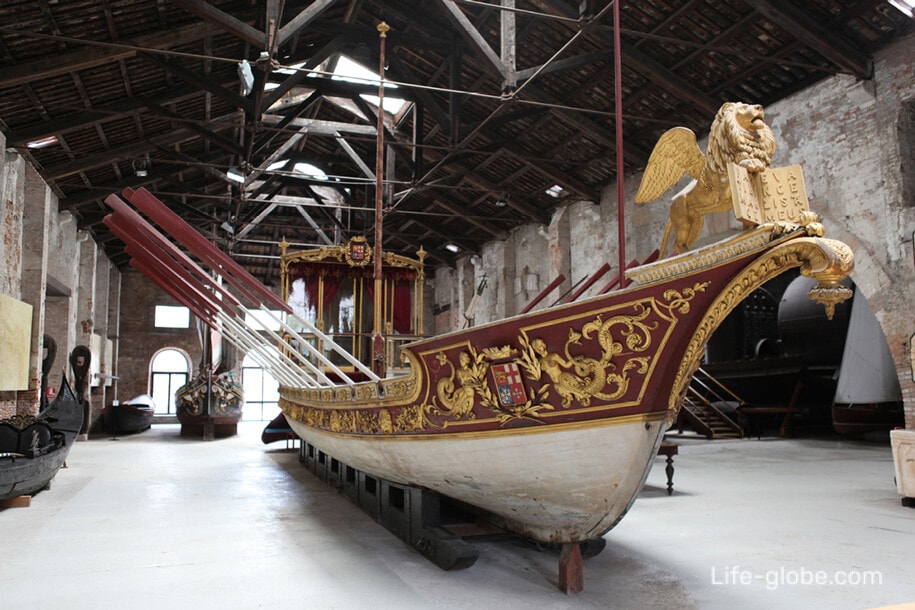
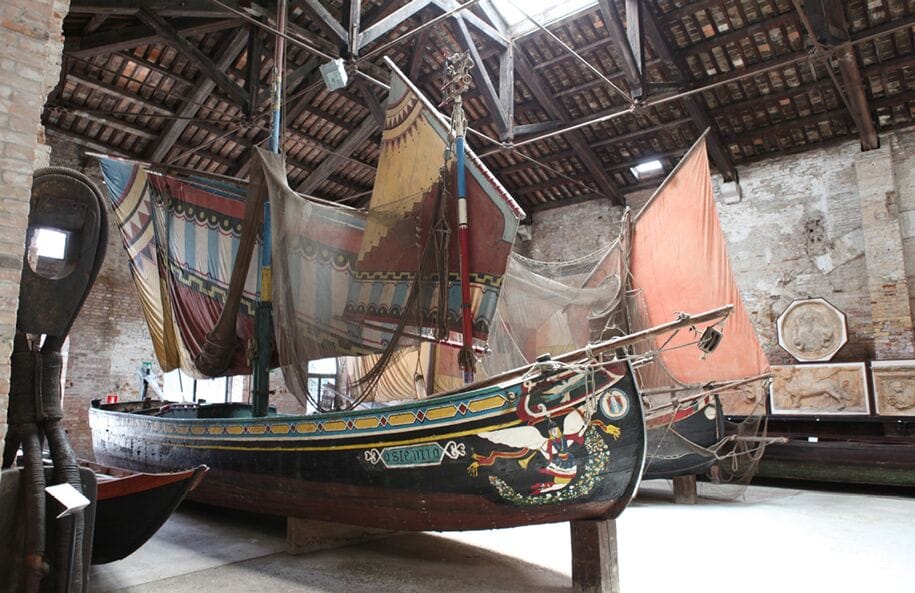
With the same entrance ticket to the museum, you can visit the church of San Biagio ai Forni (Chiesa di San Biagio Vescovo), located next to the building of the former granary.
This ancient church of Marineria, which, according to legend, dates back to the 9th century, but it owes its current appearance to the reconstruction of the 17th century, was first the Brightest, then Austro-Venetian and, finally, Italian. Today it serves as a private chapel of the Italian Navy and preserves, among other things, the body of Admiral Angelo Emo and the heart of His Imperial Highness Archduke Francesco Federico d'Asburgo, who wanted to give it to Venice, a very beloved city.
The tombstone of Admiral Angelo Emo was made by the sculptor Giovanni Ferrari.
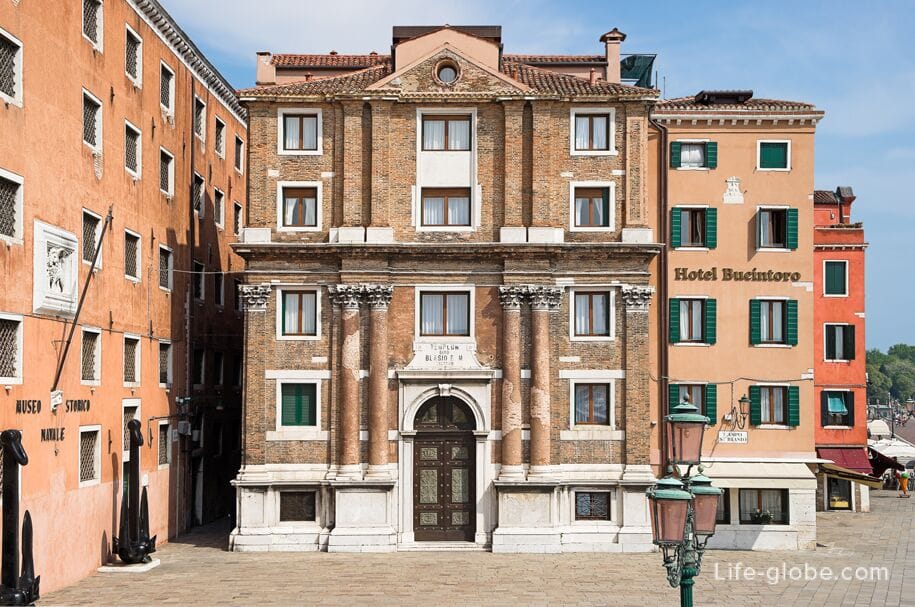
Full information about the museum's collections, entrance tickets and conditions of visits is recommended to check on the website of the Museum of the History of the Navy of Venice: museo-storico-navale-di-venezia.
All accommodation facilities in Venice, including in the historical center of the city and more remotely from it, can be viewed and booked here